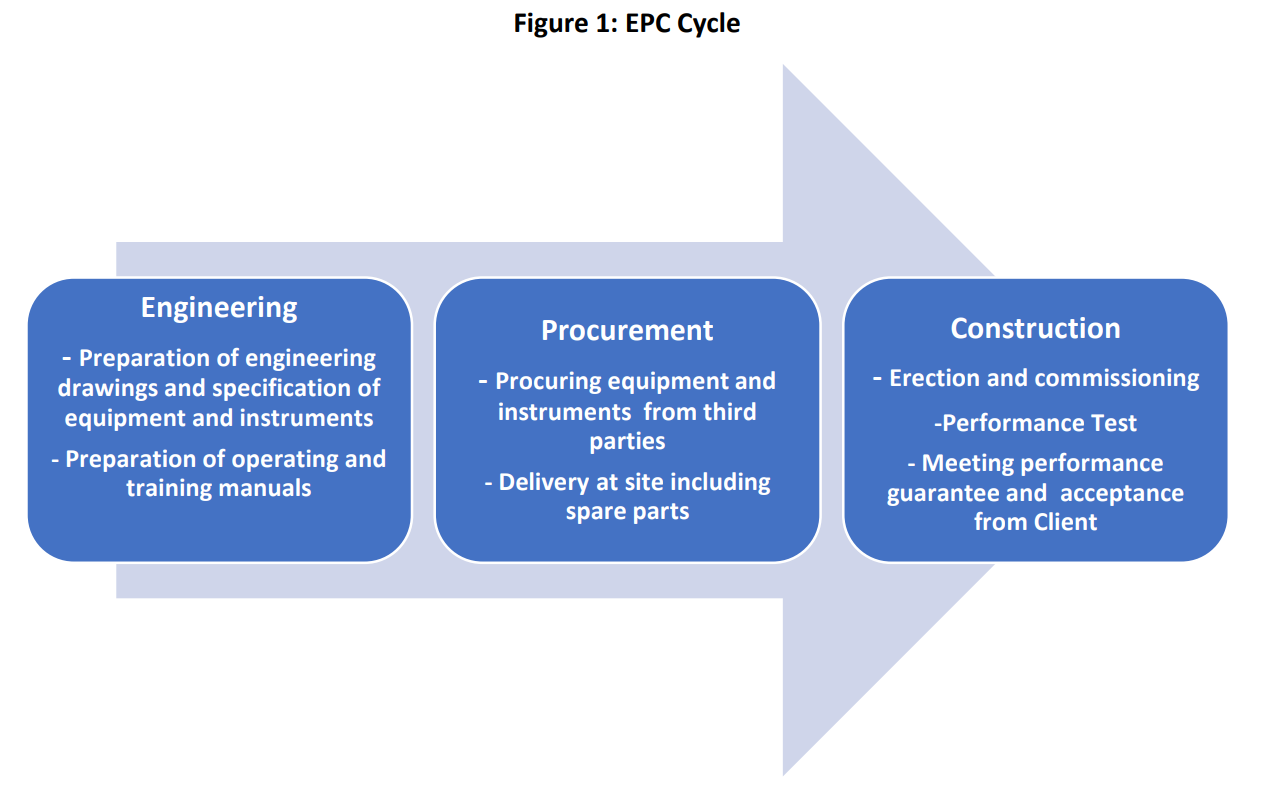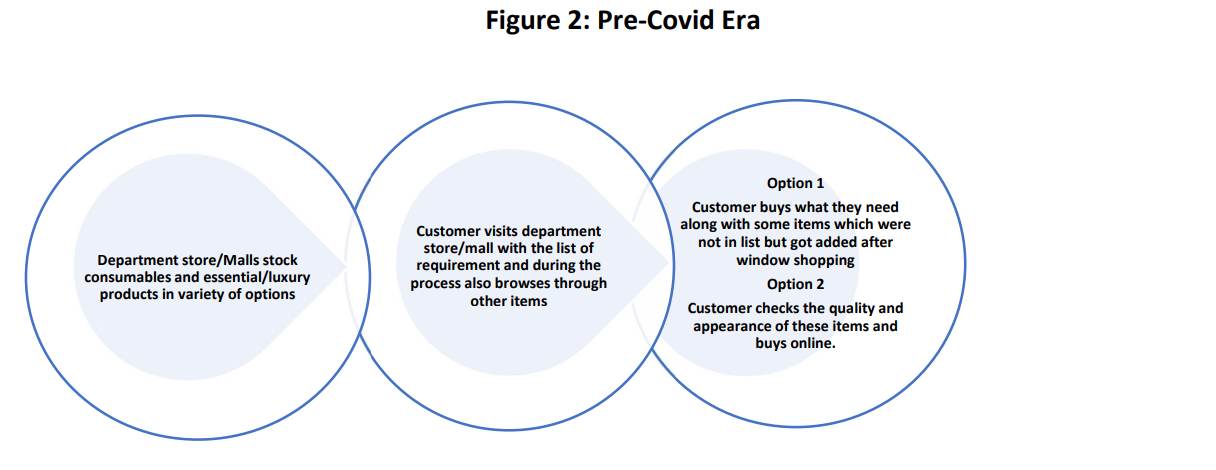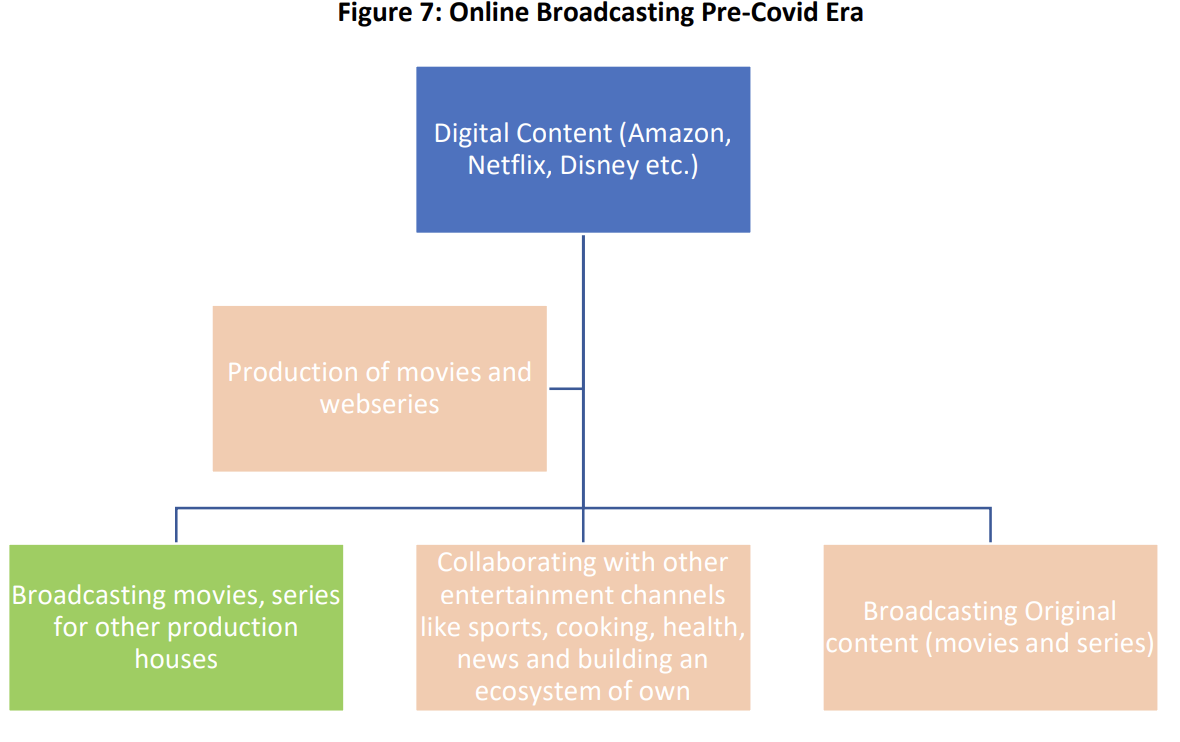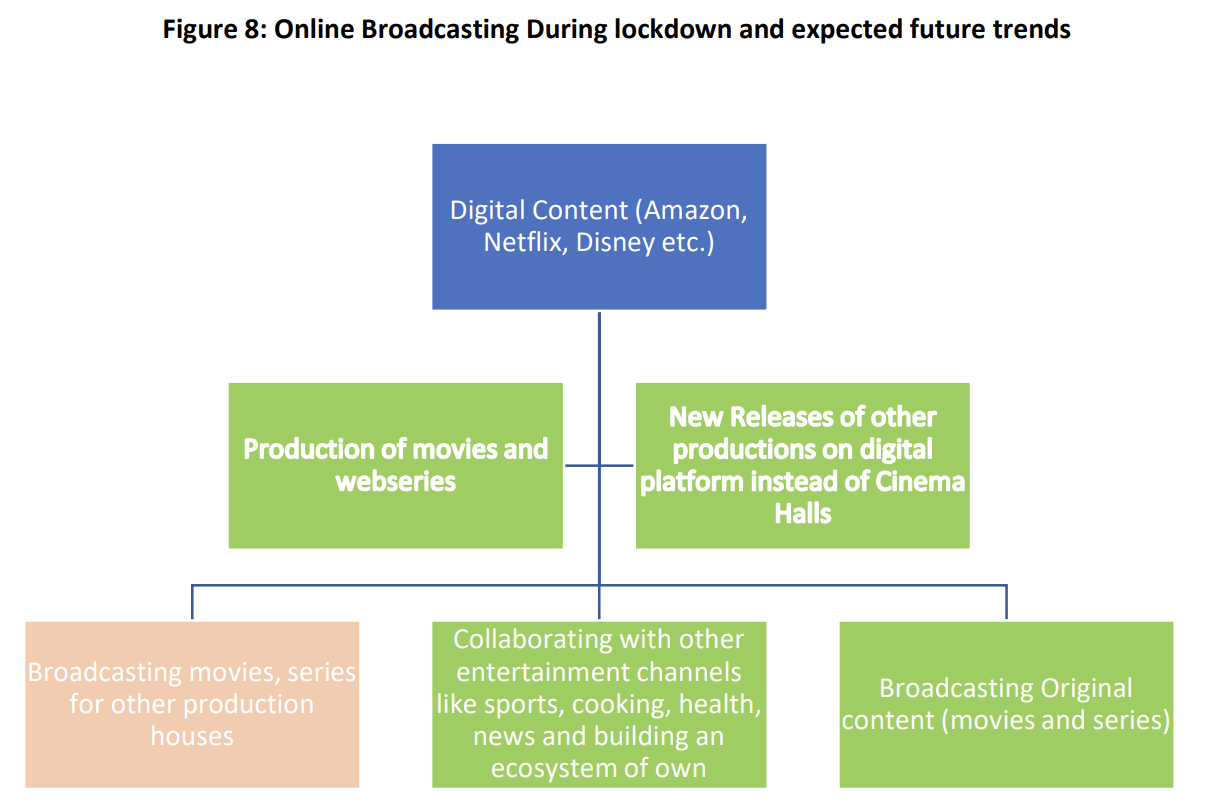California Management Review
California Management Review is a premier academic management journal published at UC Berkeley
by Vijaya A. Bansode

I was studying for an Executive MBA at SDA Bocconi when I first heard about the terms ‘digital transformation,’ ‘digitalization,’ ‘HIT,’ and ‘artificial intelligence,’ and how they would affect the workplace over the coming decades. While studying these terms, their practical applications seemed like a distant future - at least in developing countries. Little did we know about the upcoming COVID pandemic and how it would quickly transform the ways businesses operate.
One major recent trend that we are experiencing is work from home. Before the pandemic, certain industries like IT had the flexibility to work from home. But traditional industries like Engineering, Procurement, and Construction (EPC) never thought it would be practical to execute billion-dollar projects working from home. I work in the EPC industry, and felt that our team always needed to be in one place to coordinate, to take instructions, and to interact with other disciplines like mechanical, electrical, civil, piping, and many others in order to carry out our work. Chemical EPCs design, construct, and help in the commissioning and startup of chemical plants.

One barrier to working from home were the engineering drawings. Before being issued to other disciplines and clients, the engineering drawings are marked up by hand with any changes, and sent for drafting in AUTOCAD. At first, this seemed impossible to complete remotely. But as they say: ‘Need is mother of invention.’ The drawings were marked in soft with use of Bluebeam / PDF Writer and given to draftsman for Cadding. The Cadded drawings were back-checked in soft and issued to other disciplines and client for further engineering.
Another constraint was the process surrounding safety reviews for the chemical plant, which is going to be erected in a different country. The engineering is done in another country as well. The most important meetings for the safe construction and operation of the plant, like Hazard and Operability Study (HAZOP) and Safety Integrity Review (SIL) are attended by an engineering contractor, chemical operators, and the client - the review is done from all possible angles so that there is no margin for error in safe operation of the plant.
Coordination and connectivity between individuals has been carried out through software like Microsoft Teams and Skype. Even before the pandemic, Teams had been installed on all of the employee’s machines so that they could interact while based at different locations. But this came as a saviour under lockdown. If it was not for the use of digital technologies, all the businesses would be at a standstill. Our first project in the lockdown was to be executed in a faraway Eastern European country. The engineering would be carried out at offices in Mumbai and Milan. The engineering documents were prepared in soft version; the checking was also done in soft version. The team interacted on Microsoft Teams and over the phone. HAZOP and SIL meetings were also carried out in teleconference. In fact, all interdisciplinary and client meetings were carried out in a telecon. The engineering started in February 2020 and by October we had issued second revisions of all the equipment specification and instrument specification based on which procurement team will go ahead with placing order. We seem to have successfully passed the first phase. Even the foundation is been laid out at the site. Now all other disciplines will move ahead with their work of procurement and construction. But still all the work can’t be done from home. The equipment and instruments need to be fabricated and the construction personals need to be at site. What we have accomplished from this example is something that seemed impossible before the lockdown - executing complex projects from home in a traditional industry like EPC.
The ride was not that smooth. It had its own challenges. The team was new, and many were working together for the first time. To get into alignment over chat and phone was required so they were in sync with each other. The instructions had to be very clear and precise so that there is no communication gap between individuals. The checking had to be rigorous as there was no room for error as the specifications were going directly for procurement. The HAZOP, SIL, and Client meetings needed to be thorough, taking into consideration any important safety points not to be missed due to communication barriers. It was very stressful initially to get acquainted to the work style while there was a pandemic in the outside world which was costing lives - while simultaneously respecting the project schedule and delivery.
There is a very important role of leadership in this situation: leaders should be considerate and thoughtful of the team members. Even under new and unexpected conditions, there is a level of project pressure - but the mental health of the team is very important. The team needs to be comforted and given clear instructions about what is expected from them so they deliver with their best possible abilities. Team members should be helpful to each other and support each other in any technical or non-technical blocks as they arise during execution of project.
As most people are still working from home, it is possible to reflect on the experience so far. It’s not all bad. There are some positive outcomes of this model. In a city like Mumbai where the commute takes even 3-4 hour a day, there is an immense amount of time saved. This can give employees more time for themselves, and more time to spend with family and to concentrate on better health. One might have more time for physical fitness which was not possible due to long commutes and long working hours in pre-COVID days. People will spend less time socialising at work and more time socialising with community and family if this model continues in future. Many companies will prefer this model as they spend very high amount on rent for offices in major metropolitan areas. The office space can shrink and employees can work in rotation if at all required. Some employees are even choosing to work much farther from the city, in rural areas closer to nature. Living in the city will not be a compulsion where you spend high amount on rent and lifestyle. Remote working is possible from everywhere. This will create more job opportunities and options for job seekers as location will not be a constraint anymore. This model will create more flexibility for companies and employees in operation of businesses.
Another such industry which is facing a revolutionary transition is E-Commerce. We face the basic question that needs to be answered: “What business are you really in?” If you are in transportation, in oil or energy, in film or entertainment? Certain industries have been proven more sustainable under pandemic conditions. If you work in retail, is your store selling extraneous consumables or is it selling what people truly need? Businesses that stocked essentials were inundated with customers early in the outbreak. But another interesting consideration is the ways in which the retail channels people selected to purchase all types of items shifted heavily online. There is a great deal of opportunity in re-envisioning the way customers shopping habits might evolve in the future as a result of new habits developed over past year of mandatory lockdown.

Let us take an example of a Watch by Emporio Armani. (Click to expand)
Color Key (% Sales)

There is shift in thinking of manufacturing executives due to large inventory which is being stored due to lock down. Their focus is changing from low cost to just-in-time manufacturing models.
One difficulty is in gauging demand during COVID. In addition, a large existing inventory needs to be sold out. Sellers are adopting technology for improving efficiency and sales. Brands are continuing to advertise extensively on social media such as Facebook, Instagram etc. In fact, the number of sponsored advertisements has increased in a large proportion during COVID. Many sellers are selling their products through e-commerce platform such as Amazon, Tata Cliq, and Flip Kart. Cosmetic companies like Loreal, MAC, Revlon, Maybelline; Perfume makers like Versace, Guess, Calvin Klein, BVLGARI and others, are selling their products through own channels (brand-owned websites) or through e-commerce retailers such as NYKA, Amazon and Tata Cliq etc. Even vegetables and fruits are being sold though online platforms such as Big Basket, Amazon Fresh etc. All these channels were available Pre-COVID, but their usage is increased substantially during lock down. Many sellers have tried to sell the inventory through offers, regular discounts, and during seasonal sales.
Figure 6 shows incredible improvement in efficiency in supply chain cycle. The Veromoda product is ordered online on 25 Nov, 6:48 P.M. through NYKA Fashion and received by customer at 26 Nov, 9:58 A.M. We can see that the product is picked up by Delivery service from Veromoda warehouse at 11:47 P.M. It passed various phases of clearance by delivery service overnight and reached the customer at 9:58 A.M. The reasons for this fast delivery could be; the product is already available at the nearest warehouse from the customer. The delivery service directly picks up the product from Seller’s warehouse and delivers to the customer. Once the seller gets good idea of the demand by going through sales over last few months; it will be easier to plan the inventory and in-turn the manufacturing process.
We can expect similar trend in the future post-COVID. Customers will be used to ordering products online as it saves time and is more convenient. Sellers will also prefer online sale as it reduces middle costs of distribution and costs associated with selling at showrooms or malls. There is a substantial cost involved in renting a place in a mall and maintaining it. This can become redundant if customers get used to online orders.
Earlier customers were hesitant in online ordering due to scepticism in expected quality and appearance of the products. During COVID, the transparency of sellers in regard to what is shown on website and actual product is substantially increased. Also return/replacement policies and refund policies are made customer friendly which has improved faith of customers in online ordering and in overall E-Commerce business. We can expect this trend to last even Post-COVID.
Figure 6: Complete Cycle from Order to Delivery
During the lockdown, most channels of public venue entertainment like cinemas, live music, and live plays have remained closed. This has forced a revolution in the entertainment industry. Netflix had already changed the user experience of watching movies from the comfort of our homes. They gave a variety of options to choose from. Very soon customers had choices such as Amazon Prime and Disney Plus. The change in viewer’s choices is a result of revolution of entertainment industry over the years through various discontinuities which the industry faced.
There have also been substantial changes in the way new media is released. Online platform such as Amazon, HBO, and Netflix are used as a substitute for theatrical release.

Color Key (Number of Viewers and TRP)

Previously, digital platforms had focused on broadcasting older hits across various genres. Disney formed an ecosystem of their own to have sports, news, and its own production. Amazon and Netflix started producing their own content and broadcasting the same.

As we can see more and more original content will be made and broadcasted. It can be expected that other platforms will also develop ecosystems of their own. As during lockdown, the movies are not released in cinemas, they are released on digital media. We can expect this trend will also continue for movies that have a smaller budget and want to reach a larger audience. Still, cinemas can be expected to continue to operate once pandemic is over as People will want to have an in-person experience.
Due to increased audience of these online platforms they are gaining respect from star actors. Earlier TV and digital media were not as sought after by well-known actors. New faces and good talent are getting broader choices and opportunities due to online platform.
Entertainment industry marketing channel is changed substantially. Earlier, new movies marketing was done through TV ads, newspapers, and banners. Now more and more social media is used for marketing new releases such as Facebook and Instagram. More actors are managing their social media accounts on their own rather than having a team manage it; to have personal connect to audience for marketing their movies or web series and thus increasing the number of audiences. There is a shift in how social media is viewed by renowned actors. It is gaining more respect and used as means to connect to more and more people. Earlier days actors kept personal lives very private but current trend is that they display their personal life and happy moments on social media. This has resulted in gaining popularity and connecting to the audience. Digital media has definitely come as a saviour for talent in entertainment industry which otherwise would have been very difficult. We are certainly witnessing a transition of entertainment industry and it is taking us to a whole new era.
During the lockdown due to COVID; industries adapted themselves and developed a new operating system to sustain and grow. We can see that a concept in the Darwinian theory of evolution, ‘Survival of the fittest’ has once again proved itself.